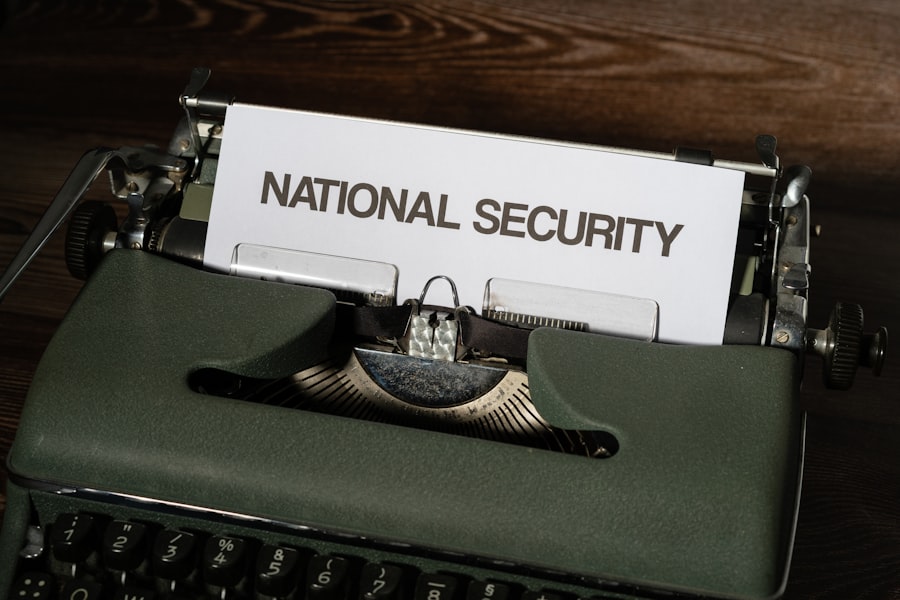The Central Intelligence Agency (CIA) has a storied history marked by significant achievements in intelligence gathering and national security. However, this history is also punctuated by internal security issues that have raised concerns about the agency’s ability to safeguard sensitive information. From the early days of the Cold War to the modern era of cyber threats, the CIA has faced numerous challenges in maintaining the integrity of its operations.
The agency’s internal security issues can be traced back to its inception in 1947, when it was established to coordinate the United States’ intelligence efforts. Over the decades, various incidents have highlighted vulnerabilities within the organization, leading to a reevaluation of its security protocols. One of the most notable internal security breaches occurred in the 1970s when former CIA officer Philip Agee publicly disclosed classified information, including the identities of covert operatives.
This incident not only compromised ongoing operations but also sparked a broader debate about the agency’s accountability and transparency. As the CIA navigated through the complexities of espionage and counterintelligence, it became increasingly clear that internal security was as critical as external threats. The agency’s history of internal security issues serves as a reminder of the delicate balance between operational secrecy and the need for robust protective measures.
Key Takeaways
- The CIA has a history of internal security issues, including espionage and insider threats.
- Security protocols within the CIA have evolved to address the impact of technology on internal security risks.
- Balancing security and information sharing is a challenge within the CIA.
- Psychological and behavioral factors play a role in identifying internal threats.
- Training, education, and leadership are important in maintaining internal security within the CIA.
The Impact of Espionage and Insider Threats on the CIA
Espionage and insider threats have had profound implications for the CIA, affecting its operational effectiveness and public perception. The agency’s mission relies heavily on trust and confidentiality, making it particularly vulnerable to individuals who may exploit their access for personal gain or ideological reasons. High-profile cases, such as those involving Edward Snowden and Chelsea Manning, have underscored the potential damage that insider threats can inflict on national security.
These incidents not only resulted in the unauthorized disclosure of classified information but also eroded public trust in the agency’s ability to protect sensitive data. The ramifications of espionage extend beyond immediate operational setbacks; they can also lead to long-term strategic consequences. When insiders leak information, it can compromise ongoing intelligence operations, endanger lives, and hinder future collaborations with foreign partners.
The CIA has had to grapple with the fallout from these breaches, often facing increased scrutiny from lawmakers and the public. As a result, the agency has recognized that addressing insider threats is not merely a matter of enhancing security protocols but also involves fostering a culture of vigilance and accountability among its personnel.
The Evolution of Security Protocols within the CIA
In response to past internal security breaches, the CIA has continually evolved its security protocols to adapt to emerging threats. Initially, the agency relied on traditional methods of safeguarding classified information, such as compartmentalization and strict access controls. However, as technology advanced and the nature of espionage changed, so too did the CIA’s approach to security.
The introduction of digital systems and online communication necessitated a reevaluation of existing protocols to address vulnerabilities associated with electronic data. The evolution of security protocols within the CIA has involved a multi-faceted approach that encompasses both technological advancements and human factors. The agency has implemented rigorous background checks and continuous monitoring of personnel to identify potential risks before they escalate into significant threats.
Additionally, training programs have been developed to educate employees about the importance of safeguarding sensitive information and recognizing suspicious behavior among colleagues. This proactive stance reflects a broader understanding that internal security is an ongoing process that requires constant vigilance and adaptation.
The Role of Technology in Mitigating Internal Security Risks
| Technology | Internal Security Risks Mitigated |
|---|---|
| Firewall | Unauthorized access, malware attacks |
| Encryption | Data breaches, unauthorized access |
| Access Control Systems | Unauthorized access, insider threats |
| Security Information and Event Management (SIEM) | Real-time monitoring, threat detection |
| Biometric Authentication | Identity theft, unauthorized access |
Technology plays a pivotal role in mitigating internal security risks within the CIA, offering innovative solutions to enhance data protection and personnel monitoring. The agency has invested heavily in cybersecurity measures to safeguard its digital infrastructure from unauthorized access and potential breaches. Advanced encryption techniques, secure communication channels, and robust firewalls are just a few examples of how technology has been leveraged to protect sensitive information from both external adversaries and insider threats.
Moreover, technology has enabled the CIA to implement sophisticated monitoring systems that track employee behavior and access patterns. By analyzing data logs and identifying anomalies, the agency can detect potential insider threats before they manifest into serious breaches. This data-driven approach not only enhances security but also fosters a culture of accountability among personnel, as employees are aware that their actions are being monitored for compliance with established protocols.
As technology continues to evolve, the CIA remains committed to integrating cutting-edge solutions into its internal security framework.
The Challenge of Balancing Security and Information Sharing within the CIA
One of the most significant challenges facing the CIA is striking a balance between maintaining robust security measures and facilitating effective information sharing among its personnel. While stringent security protocols are essential for protecting sensitive data, they can inadvertently create silos that hinder collaboration and impede operational efficiency. The agency must navigate this delicate balance to ensure that its employees have access to the information they need while safeguarding against potential insider threats.
To address this challenge, the CIA has adopted a more nuanced approach to information sharing that emphasizes both security and collaboration. By implementing tiered access levels based on personnel roles and responsibilities, the agency can provide employees with appropriate access to information while minimizing exposure to sensitive data. Additionally, fostering a culture of trust and open communication among personnel is crucial for encouraging collaboration without compromising security.
This ongoing effort reflects an understanding that effective intelligence operations rely on both secure practices and seamless information exchange.
The Psychological and Behavioral Factors in Identifying Internal Threats

Understanding the psychological and behavioral factors that contribute to internal threats is essential for enhancing the CIA’s internal security measures. Research has shown that certain personality traits and motivations can predispose individuals to engage in risky behaviors or betray their organizations. Factors such as dissatisfaction with work conditions, ideological beliefs, or personal grievances can drive individuals to leak sensitive information or collaborate with adversaries.
To effectively identify potential insider threats, the CIA has implemented behavioral analysis programs that focus on recognizing warning signs among personnel. These programs emphasize the importance of fostering a supportive work environment where employees feel valued and heard. By addressing underlying issues that may lead to discontent or disloyalty, the agency can mitigate risks associated with insider threats.
Additionally, training programs aimed at enhancing emotional intelligence among employees can help cultivate a culture of awareness and vigilance regarding potential risks within the organization.
The Importance of Training and Education in Maintaining Internal Security
Training and education are critical components in maintaining internal security within the CIRecognizing that personnel are often the first line of defense against insider threats, the agency has prioritized comprehensive training programs designed to equip employees with the knowledge and skills necessary to safeguard sensitive information. These programs cover a wide range of topics, including cybersecurity best practices, recognizing suspicious behavior, and understanding the consequences of unauthorized disclosures. Moreover, ongoing education is essential for keeping personnel informed about evolving threats and emerging technologies.
As new challenges arise in the realm of espionage and cybersecurity, continuous training ensures that employees remain vigilant and prepared to respond effectively. By fostering a culture of learning and awareness, the CIA empowers its workforce to take an active role in maintaining internal security while reinforcing their commitment to protecting national interests.
The Role of Leadership in Promoting a Culture of Security within the CIA
Leadership plays a pivotal role in promoting a culture of security within the CISenior officials set the tone for organizational values and priorities, influencing how employees perceive their responsibilities regarding internal security. When leaders prioritize security measures and demonstrate a commitment to safeguarding sensitive information, it fosters an environment where personnel feel empowered to take ownership of their roles in protecting national interests. Effective leadership also involves transparent communication about security policies and practices.
By openly discussing potential risks and encouraging dialogue about best practices for safeguarding information, leaders can cultivate trust among employees. This collaborative approach not only enhances morale but also reinforces a shared sense of responsibility for maintaining internal security across all levels of the organization.
The Collaboration with External Agencies in Addressing Internal Security Concerns
Collaboration with external agencies is essential for addressing internal security concerns within the CIA effectively. Recognizing that no organization operates in isolation, the agency has established partnerships with various federal entities, law enforcement agencies, and private sector organizations to share intelligence and best practices related to internal security. This collaborative approach enhances situational awareness and enables the CIA to stay ahead of emerging threats.
By engaging with external partners, the CIA can leverage diverse perspectives and expertise to strengthen its internal security measures further. Joint training exercises, information-sharing initiatives, and collaborative research efforts contribute to a more comprehensive understanding of potential risks associated with insider threats. This interconnected approach underscores the importance of collective action in safeguarding national interests while reinforcing the notion that internal security is a shared responsibility.
The Future of Internal Security Measures within the CIA
As threats continue to evolve in an increasingly complex global landscape, the future of internal security measures within the CIA will likely involve further innovation and adaptation. The agency is expected to invest in advanced technologies such as artificial intelligence and machine learning to enhance its ability to detect anomalies in employee behavior or data access patterns. These technologies hold promise for identifying potential insider threats before they escalate into significant breaches.
Additionally, as remote work becomes more prevalent across various sectors, including intelligence agencies, adapting internal security measures to accommodate this shift will be crucial. The CIA will need to develop new protocols that address unique challenges associated with remote access while ensuring that sensitive information remains protected. By embracing change and proactively addressing emerging risks, the agency can continue to strengthen its internal security framework for years to come.
Case Studies of Internal Security Breaches and Their Implications for the CIA
Examining case studies of internal security breaches provides valuable insights into their implications for the CIA’s operations and policies. One prominent example is the case of Edward Snowden, who leaked classified documents revealing extensive surveillance programs conducted by the National Security Agency (NSA) and other intelligence agencies. Snowden’s actions not only compromised national security but also sparked widespread public debate about privacy rights and government transparency.
Another significant case involved Chelsea Manning, who disclosed thousands of classified military documents related to U.S. operations in Iraq and Afghanistan. Manning’s leaks raised questions about accountability within military intelligence operations and highlighted vulnerabilities in personnel screening processes.
Both cases underscored the need for robust internal security measures that address not only technological vulnerabilities but also human factors contributing to insider threats. These case studies serve as cautionary tales for the CIA as it continues to refine its internal security protocols. They emphasize the importance of fostering a culture of vigilance among personnel while recognizing that addressing insider threats requires a multifaceted approach encompassing technology, training, leadership engagement, and collaboration with external partners.
By learning from past breaches, the CIA can better prepare itself for future challenges in safeguarding national interests against internal threats.




